Best Orlando Treatment for a
ROTATOR CUFF TEAR
Are you not able to continue your cherished hobbies or everyday activities because of sharp pain in your shoulder when you move? With our expert doctors’ help, you can get to the root of your symptoms and get back to doing what you love quicker and easier.
Read More Ask A QuestionBest Orlando Treatment for a
ROTATOR CUFF TEAR
Are you not able to continue your cherished hobbies or everyday activities because of sharp pain in your shoulder when you move? With our expert doctors’ help, you can get to the root of your symptoms and get back to doing what you love quicker and easier.
Read More Ask A QuestionHere Is Everything You Need To Know About A Rotator Cuff Tear, What Causes It, and The Best Way to Treat It
Click the tabs below to get direct answers to your questions
What is a rotator cuff tear?
The “rotator cuff” is a group of 4 muscles that are responsible for keeping the shoulder joint stable. Unfortunately, injuries to the rotator cuff are very common, either from injury or with repeated overuse of the shoulder. Injuries to the rotator cuff can vary as a person ages. Rotator cuff tears are more common later in life, but they also can occur in younger people. Athletes and heavy laborers are commonly affected; older adults also can injure the rotator cuff when they fall or strain the shoulder, such as when walking a dog that pulls on the leash. When left untreated, this injury can cause severe pain and a decrease in the ability to use the arm.
What are common causes of a rotator cuff tear?
The “rotator cuff” is a group of 4 muscles and their tendons (which attach them to the bone). These muscles connect the upper-arm bone, or humerus, to the shoulder blade. The important job of the rotator cuff is to keep the shoulder joint stable. Sometimes, the rotator cuff becomes inflamed or irritated due to heavy lifting, repetitive arm movements, or a fall. A rotator cuff tear occurs when injuries to the muscles or tendons cause tissue damage or disruption.
Rotator cuff tears are called either “full-thickness” or partial-thickness,” depending on how severe they are. Full-thickness tears extend from the top to the bottom of a rotator cuff muscle/tendon. Partial-thickness tears affect at least some portion of a rotator cuff muscle/tendon, but do not extend all the way through.
Tears often develop as a result of either a traumatic event or long-term overuse of the shoulder. These conditions are commonly called acute or chronic:
- An acute rotator cuff tear is one that just recently occurred, often due to a trauma such as a fall or lifting a heavy object.
- Chronic rotator cuff tears are much slower to develop. These tears are often the result of repeated actions with the arms working above shoulder level—such as with ball-throwing sports or certain work activities.
People with chronic rotator cuff injuries often have a history of rotator cuff tendon irritation that causes shoulder pain with movement. This condition is known as shoulder impingement syndrome (SIS).
Rotator cuff tears also may occur in combination with injuries or irritation of the biceps tendon at the shoulder, or with labral tears (to the ring of cartilage at the shoulder joint).
Where does it hurt?
In most cases of a shoulder rotator cuff tear, patients report sharp pain in the shoulder and any movement causes sharp stabbing pain.
What are common symptoms of a rotator cuff tear?
Rotator cuff tears can cause:
- Pain over the top of the shoulder or down the outside of the arm
- Shoulder weakness
- Loss of shoulder motion
- The injured arm often feels heavy, weak, and painful. In severe cases, tears may keep you from doing your daily activities or even raising your arm. People with rotator cuff tears often are unable to lift the arm to reach high shelves or reach behind their backs to tuck in a shirt or blouse, pull out a wallet, or fasten a bra.
To Get A "Insider's Look" At Our Treatment Approach And How We Get Results...
Click Below To Watch Our Exclusive Webinar! It's Simple, Short, and It's Free!

- Learn The Essential First Step... So You Can Get Pain Free Again
- See Why Treatment Needs To Be Individualized, Not Standardized...So You Get Faster Results!
- Learn How You Can Save Money...So You Don't Have To Waste $1000's On Unnecessary Treatments
To Get A "Insider's Look" At Our Treatment Approach And How We Get Results...
Click Below To Watch Our Exclusive Webinar! It's Simple, Short, And It's Free!

- Learn The Essential First Step...So You Can Get Pain Free Again
- See Why Treatment Needs To Be Individualized, Not Standardized...So You Get Faster Results
- Learn How You Can Save Money...So You Don't Have To Waste $1000's On Unnecessary Treatments
Can a rotator cuff tear be treated?
Yes, a rotator cuff tear pain can be treated and with great results. Even better, many times it can be treated conservatively without needing injections, pain medications, or surgeries if you catch it early enough and if you don’t have a major mechanism of injury
Some root causes of rotator cuff tear shoulder pain can be:
- Forward head posture
- Rounded shoulders with impingement
- Weak mid back and shoulder blade muscles
- Overload to the shoulder joint with active motions
- Tight neck and mid back
- Poor shoulder biomechanics
- Decreased mid-back rotation
- Tight rotator cuff muscles
If you have failed multiple treatment approaches already, your clinician missed the real root cause of your pain and was just chasing the symptoms. The pain or symptom is the effect, not the cause. What do I mean by this? Say your fire alarm goes off in your house. Its purpose is to protect you and make you aware that something is wrong, i.e., that there is a fire in your house. The “alarm” is like your pain (your body’s way of telling you something is wrong) and the “fire” is the root cause. When the fire alarm goes off, you don’t run upstairs and just turn it off, right? You run through the house with the fire extinguisher, trying to find the room where the fire is at. You try to find out what caused the alarm to go off so you can put it out. Once the fire is out, then the fire alarm can go off. Solve the “root” cause of your pain, and then the pain (“the effect”) eventually goes away.
Additionally, there is a common root cause which many clinicians misdiagnose. They treat the shoulder pain with a cookie cutter approach, hoping it will work and treat it as a simple muscle problem. They tend to rely on stretching, ultrasound, massage and focus treatment directly on the shoulder joint. However, often the root cause is missed and the symptoms return. If you can normalize shoulder range of motion and biomechanics, you should be able to decrease your pain and increase the range of motion. So many healthcare clinicians treat pain like this and thus show poor treatment outcomes which results in the pain coming back. Why? They missed the root cause of your shoulder pain. This is also the case when patients turn to injections, nerve blocks and other surgeries which are still not effective because the actual problem still is not solved, their treatment was just chasing the pain.
The first step in treatment is to identify the root cause of your pain. A specific and individualized treatment approach for your type of pain can lead to a successful outcome for you and resolve your symptoms for the long term. This is why you can’t rely on a standard cookie cutter approach; you need a customized and individualized treatment approach specifically for your type of rotator cuff tear shoulder pain.
What happens if it goes untreated?
Minor case – If it is a minor case of pain from a rotator cuff tear, research shows that many acute cases of pain may spontaneously go away in 4-8 weeks. You may have had the rotator cuff tear before you had your shoulder pain, so it may be a false positive finding and not the cause of
Severe case – If it’s more of a severe and chronic case of pain from a rotator cuff tear, your pain will probably start to worsen and increase because the root cause of the pain is not being treated. Many people turn to pain medication at this time but this only blocks the pain for short term. You may not feel the pain when taking pain medications, but the underlying problem is still there. Many people say after the pain medication is stopped, then usually the pain returns and sometimes it returns even worse. This is when you will need to decide whether you need surgery or not. You will either respond to physical therapy or not. If the tear is big enough, then you may need surgery. If you do respond to physical therapy though, many people can continue to regain full range of motion, increase strength, and return to their favorite activities Even though it’s more chronic now, we can still help. Once the root cause and all risk factors are addressed, then we can start decreasing your pain, regardless of how chronic and severe the pain is. This is the crucial first step. It just may take more time to recover from a chronic case. Usually with chronic and severe cases, the longer you have your pain and injury, the longer it takes to resolve.
What outcome can you expect from treatment?
As we’ve discussed, the first step is to solve the root cause of your rotator cuff tear pain. This is the most essential step to plan a treatment specialized for you and your unique type of pain. Your root cause will guide your treatment and dictate what is the best way to treat your pain. This, along with identifying risk factors that may be predisposing you to have your pain and injury, will allow you to start getting pain free again. The next step is to start decreasing pain, modifying activities, and start addressing all of the impairments causing your pain which we discovered during your evaluation. With each session, pain should start to decrease and you should start to regain range of motion with less pain and symptoms. Any radicular and referred pain should resolve fast as well. At this point, we begin light and basic strengthening only if it does not increase pain. Treatment will consist
The next step is to achieve full range of motion, (which should correlate to being
To Get A "Insider's Look" At Our Treatment Approach And How We Get Results...
Click Below To Watch Our Exclusive Webinar! It's Simple, Short, and It's Free!

- Learn The Essential First Step... So You Can Get Pain Free Again
- See Why Treatment Needs To Be Individualized, Not Standardized...So You Get Faster Results!
- Learn How You Can Save Money...So You Don't Have To Waste $1000's On Unnecessary Treatments
To Get A "Insider's Look" At Our Treatment Approach And How We Get Results...
Click Below To Watch Our Exclusive Webinar! It's Simple, Short, And It's Free!

- Learn The Essential First Step...So You Can Get Pain Free Again
- See Why Treatment Needs To Be Individualized, Not Standardized...So You Get Faster Results
- Learn How You Can Save Money...So You Don't Have To Waste $1000's On Unnecessary Treatments
How is it diagnosed?
Your physical therapist will review your health history, perform a thorough examination, and conduct a series of tests designed specifically to help pinpoint the cause of your shoulder pain
Do you need an X-ray and MRI imaging for shoulder arthritis pain?
For most common orthopedic cases, imaging is not needed and the diagnosis can be made with a simple physical therapy evaluation. No need to waste thousands of dollars on unwarranted diagnostic imaging. We also have clinical tests which we can perform to help rule in and rule out pathologies that correlate to MRI findings (which is WAY cheaper than an MRI!). An expensive MRI may just tell us what we already know. Also, often times the positive findings found on x-rays, MRIs, and EMGs may not actually be the root cause of your pain. What does that mean? Many positive findings on an MRI are also found in asymptomatic (pain-free) individuals, so diagnostic imaging may not be able to tell us what is actually causing your pain. For example: many people have a herniated disc in their low back but do not have any low back pain. So if herniated discs can cause no pain, just because someone with low back pain has a herniated disc does not mean that is what’s causing their pain. The key is to find out if your clinical evaluation findings during your evaluation at Pursuit match the MRI findings. If so, then we can decide what is the best way to treat it.
How can a Physical Therapist treat it?
Once a rotator cuff injury has been diagnosed, you will work with your orthopedist and physical therapist to decide if you should have surgery or if you can try to manage your recovery without surgery. If you don’t have surgery, your therapist will work with you to restore your range of motion, muscle strength, and coordination, so that you can return to your regular activities. In some cases, your therapist may help you learn to modify your physical activity so that you put less stress on your shoulder. If you decide to have surgery, your therapist can help you both before and after the procedure.
Regardless of which treatment you have—physical therapy only, or surgery and physical therapy—early treatment can help speed up healing and avoid permanent damage.
If You Have an Acute Injury
If a rotator cuff tear is suspected following a trauma, seek the attention of a physical therapist or other health care provider to rule out the possibility of serious life- or limb-threatening conditions. Once
If You Have a Chronic Injury
A physical therapist can help manage the symptoms of chronic rotator cuff tears as well as improve how your shoulder works. For large rotator cuff tears that can’t be fully repaired, physical therapists can teach special strategies to improve shoulder movement.
If You Have Surgery
Once a full-thickness rotator cuff tear develops, you may need surgery to restore use of the shoulder or decrease painful symptoms. Physical therapy is an important part of the recovery process. The repaired rotator cuff is vulnerable to reinjury following shoulder surgery, so it’s important to work with a physical therapist to safely regain full use of the injured arm. After the surgical repair, you will need to wear a sling to keep your shoulder and arm protected as the repair heals. Once you are able to remove the sling for exercise, the physical therapist will begin your exercise program.
Your physical therapist will design a treatment program based on both the findings of the evaluation and your personal goals. He or she will guide you through your post surgical rehabilitation, which will progress from gentle range-of-motion and strengthening exercises and ultimately to activity- or sport-specific exercises. Your treatment program most likely will include a combination of exercises to strengthen the rotator cuff and other muscles that support the shoulder joint. Your therapist will instruct you in how to use therapeutic resistance bands. The timeline for your recovery will vary depending on the surgical procedure and your general state of health, but
Physical therapy after your shoulder surgery is essential to restore your shoulder’s function. Your rehabilitation will typically be divided into 4 phases:
- Phase I – Maximal protection: This phase lasts for the first few weeks after your surgery, when your shoulder is at the greatest risk of reinjury. During this phase, your arm will be in a sling. You will likely need assistance or need strategies to accomplish everyday tasks such as bathing and dressing. Your physical therapist will teach you gentle range-of-motion and isometric strengthening
exercises, will provide hands-on techniques such as gentle massage, will offer advice on reducing your pain, and may use cold compression and electrical stimulation to relieve pain. - Phase II – Moderate protection: This next phase has the goal of restoring mobility to the shoulder. You will reduce the use of your sling, and your range-of-motion and strengthening exercises will become more challenging. Exercises will be added to strengthen the “core” muscles of your trunk and shoulder blade (scapula) and “rotator cuff” muscles that provide additional support and stability to your shoulder. You will be able to begin using your arm for daily activities, but will still avoid any heavy lifting with your arm. Your physical therapist may use special hands-on mobilization techniques during this phase to help restore your shoulder’s range of motion.
- Phase III – Return to activity: This phase has the goal of restoring your strength and joint awareness to equal that of your other shoulder. At this point, you should have full use of your arm for daily activities, but you will still be unable to participate in activities such as sports, yard work, or physically strenuous work-related tasks. Your physical therapist will advance the difficulty of your exercises by adding more weight or by having you use more challenging movement patterns. A modified weight-lifting/gym-based program may also be started during this phase.
- Phase IV – Return to occupation/sport: This phase will help you return to sports, work, and other higher-level activities. During this phase, your physical therapist will instruct you in activity-specific exercises to meet your needs. For certain athletes, this may include throwing and catching drills. For others, it may include practice in lifting heavier items onto shelves, or instruction in raking, shoveling, or housework.
How long does it take for recovery?
Recovery time for a rotator cuff tear pain depends on multiple factors:
- The severity and chronicity of your pain
- Whether your pain is an easy or complex case
- If the root cause of your pain was solved or if it was missed (this is the key to getting a great recovery!)
- How long you have been in pain for and when you need to be pain-free by
- Other therapies and treatments you have tried
- Which medical professional(s) you saw prior to seeing us
- How active you are in trying to resolve your pain
- Which treatment approach is chosen and if it is proven to work for your pain
There are many factors that influence your recovery time and every patient’s recovery time is different. If you do nothing and don’t pursue treatment, it could gradually get better on its own, you could continue to have the same pain persist, or it could continue to get worse. As stated earlier, most acute cases may or may not resolve in 4-8 weeks. If you get expert treatment that solves the root cause of your pain, some cases resolve in 1-3 weeks! Then you can get back to sports, exercise, and your favorite activities without flare-ups and recurrences. Some of our patients are pain-free in 1-3 visits and back to 100% in 2 weeks!
If it is a complex case with chronic pain, your recovery may take longer, but you can still get a good outcome. Some chronic cases can resolve as fast as 2 months but can take as long as 4-6 months. It varies with every patient because every case of rotator cuff tear pain is different. Every patient’s recovery varies depending on the factors listed above. After a thorough evaluation here at Pursuit Physical Therapy, you will know your exact timeline of recovery, your prognosis, and when you should reach your goals.
How much does it cost?
The average cost of care for a case of spine pain in the US is $1800-$6600. This high price is due to many factors: the over-inflated cost of healthcare, the over expensive cost of unwarranted imaging (x-rays, CT scans, and MRIs) that is not needed, over-utilization of care (which increases the number of visits needed to be treated, requiring multiple visits to different doctors and physical therapists for the same diagnosis), and getting billed for unnecessary and unproven treatments that you don’t even need. All of these factors increase cost and this is why healthcare is so expensive. We strive to end that unnecessary, expensive cycle. In fact, we are currently publishing our first-year data with the University of Central Florida that shows the cost-effectiveness of our treatment approach.
This year, the average cost of our care was shown to be $814-$1141. Some of our patients get even as low as $315 for the full treatment! So if you have a deductible of $3,000-$10,000 and you have to pay out of pocket for your treatment, we can save you lots of money.
Remember, every case of pain is different and not all cases of rotator cuff tear pain are the same. It is hard to predict exactly how much your treatment is going to cost you. But after a thorough evaluation, we can tell you exactly what is causing your pain, how long it is going to take, what the best way to treat it will be, and exactly how much it is going to cost. We have no hidden fees, no co-pays, and no miscellaneous bills that you will be surprised by 3 months after you receive treatment. Your pain, your diagnosis, your goals, and what is best for you dictate your treatment and how much it will cost, and while it varies for every patient, treatment at Pursuit is still much more affordable than standard healthcare.
How long are sessions?
Our evaluations are always one-on-one with one of our board-certified specialists and 60-90 minutes long. We like to perform thorough evaluations so we can solve the root cause of your pain, identify all risk factors, and make sure that we do it right. After the evaluation, you will know your diagnosis, the root cause of why you have your pain and symptoms, your prognosis, an expected timeline of when you should see results, what the best way to treat your pain is, how much it will cost, and your expected recovery outcome. We want you to fully understand everything about your pain and injury. What is best for you and will get you the best outcome is what will dictate your care and treatment. There will be plenty of time for you to ask questions so we can make sure you fully understand why you have your pain and what the best way to treat it will be. After the evaluation is completed, all treatment sessions are 60 minutes going forward and still one-on-one with your physical therapist. You and your physical therapist will design a customized treatment plan that works for you and that will achieve your goals.
How can it be prevented?
A physical therapist can help you decrease your risk of developing or worsening a rotator cuff tear, especially if you seek assistance at the first sign of shoulder pain or discomfort. To avoid developing or progressing to a rotator cuff tear from an existing shoulder impingement, it is imperative to avoid future exacerbations. Your physical therapist can help you strengthen your rotator cuff muscles, train you to avoid potentially harmful positions, and determine when it is appropriate for you to return to your normal activities.
General Tips:
- Avoid repeated overhead arm positions that may cause shoulder pain. If your job requires such movements, seek out the advice of a physical therapist to learn arm positions that may be used with less risk.
- Apply rotator cuff muscle and scapular strengthening exercises into your normal exercise routine. The strength of the rotator cuff is just as important as the strength of any other muscle group. To avoid potential detriment to the rotator cuff, general strengthening and fitness programs may improve shoulder health.
- Practice good posture. A forward position of the head and shoulders
has been shown to alter shoulder blade position and create shoulder impingement syndrome. - Avoid sleeping on your side with your arm stretched overhead, or lying on your shoulder. These positions can begin the process that causes rotator cuff damage.
- Avoid carrying heavy objects at your side; this can strain the rotator cuff.
- Avoid smoking; it can decrease the blood flow to your rotator cuff.
- Consult a physical therapist at the first sign of symptoms
What are next steps?
Getting started is simple. The first step, and the key to getting you
Solve the root cause of your pain
How Our Treatment is Different
We believe that working with a specific specialist for your care is the best way to solve the root cause of your pain. Work one-on-one with a Doctor of Physical Therapy every time your visit our office.
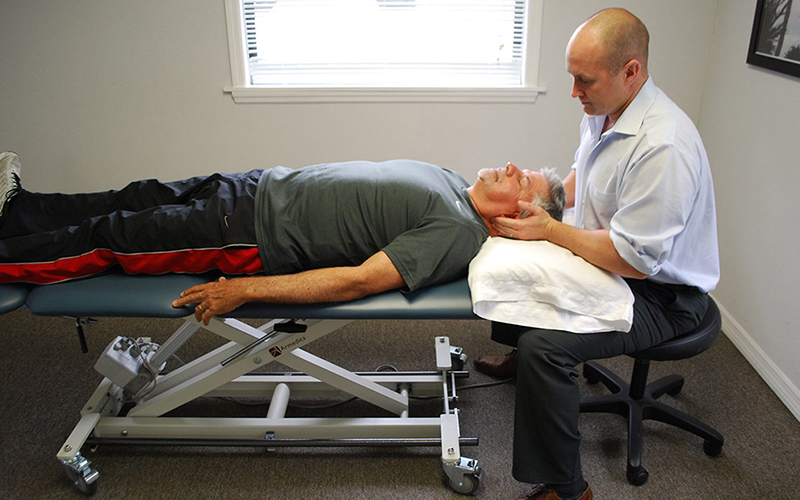
Exclusive one-on-one patient care
While most clinics will give you a limited amount of time with your Doctor, we believe that true results come from consistent one-on-one therapy.
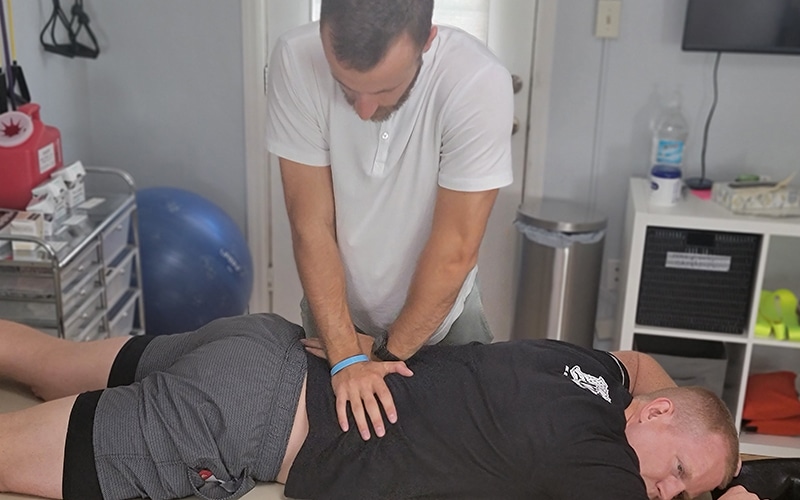
Work with your specialist every visit
Stop being handed off to trainees or non-Doctors for your Physical Therapy. At Pursuit, you'll work exclusively with your Doctor of Physical Therapy that specializes in your specific needs.
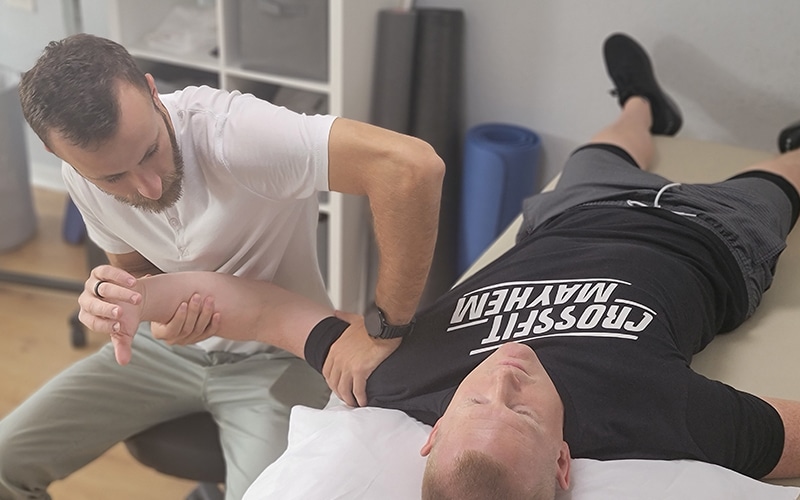
24/7 messaging access to your specialist
Ever have an issue or questions? We're here to help. Get 24/7 access to your specialist while you're under our care. Physical Therapy doesn't just happen when you're in our clinic, so we're here for you when you need us.
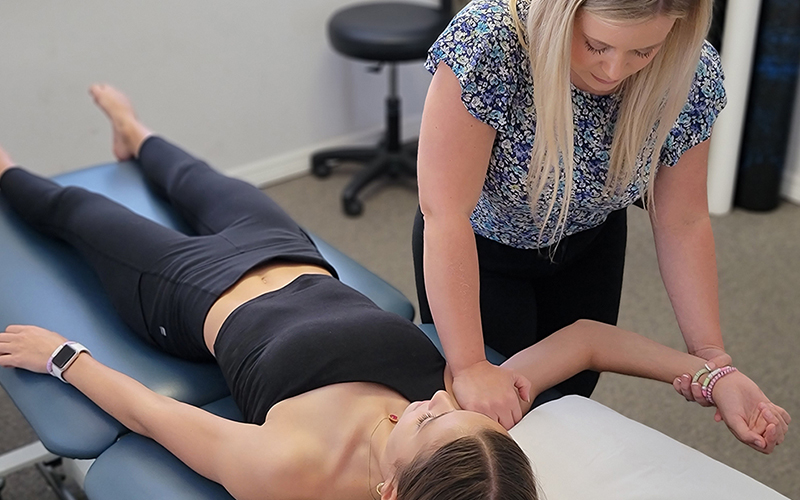
No waiting periods
Get off that waiting list and get the treatment you need. We're always ready to accept new patients, so you can get better faster and get back to a pain-free life that you deserve.
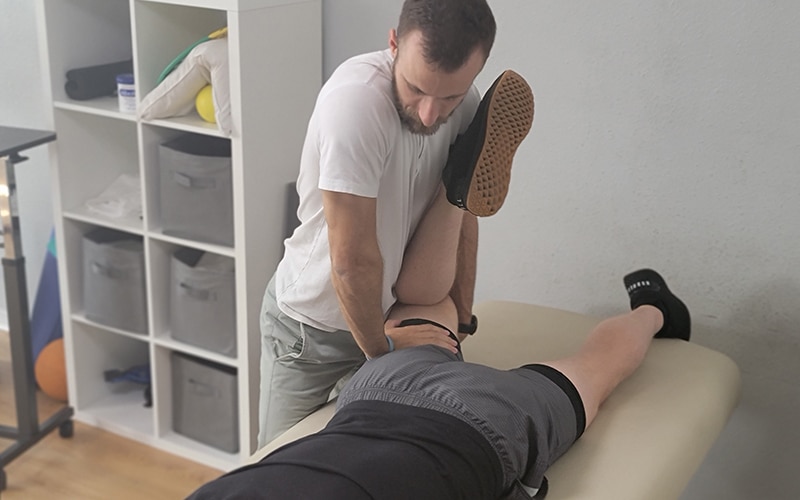
Not limited by insurance
Don't let the insurance companies tell you how much treatment you need. Avoid the limitations of short sessions that insurance provides and work with our Doctors when you need it and for as long as you need it.
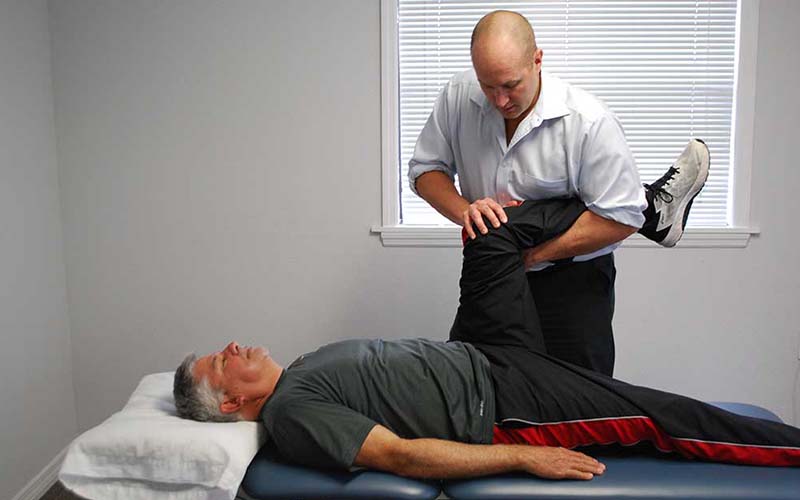
No painful injections, no expensive medications, no surgery
In order to truly solve your pain, we use a holistic approach to Physical Therapy, not relying on injections, medications, or surgery. Instead, we'll strengthen your body's weak points that are causing your pain.
MEET THE TEAM
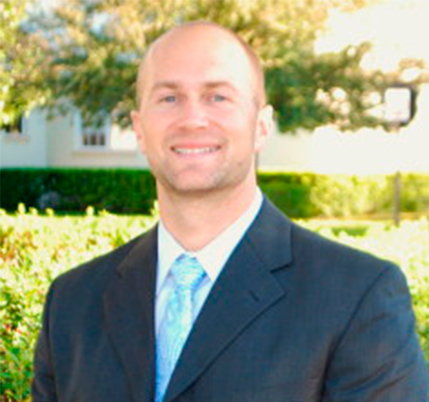
RON MILLER, DPT, OCS, Cert DN
Doctor of Physical Therapy | Board Certified Orthopaedic Physical Therapy Clinical Specialist | Post-Doctoral Orthopaedic Residency Trained | Certified in Dry Needling | Titleist Performance Institute Certified
Dr. Ron Miller is the owner and founder of Pursuit Physical Therapy. His core belief is that it is not about the physician, the physical therapist, or the insurance company: it is about what is truly best for the patient. Dr. Miller started...

CAREY ROTHSCHILD, DPT, OCS, SCS, CSCS, CKTP
Doctor of Physical Therapy and Assistant Professor at the University of Central Florida | Board Certified Orthopaedic Clinical Specialist
| Board Certified Sport Clinical Specialist
Dr. Carey Rothschild is an Assistant Clinical Professor in the Doctor of Physical Therapy Program at the University of Central Florida. Dr. Rothschild earned a Bachelor of Health Science in Physical Therapy in 1999 from the University of Florida and a Doctor of Physical Therapy from Boston University in 2005...


MICHAEL FABRICK, DPT, Cert. DN
Doctor of Physical Therapy | Certified in Dry Needling | Pursuit Sports Performance Specialist | Professional Tennis Tour Physical Therapist
Dr. Michael Fabrick was born and raised in Hanover, Pennsylvania and attended Slippery Rock University where he received his Bachelor’s degree in Exercise Science. He then went on to receive his Doctorate Degree in Physical Therapy in May of 2020. During his final tenure as a Doctoral intern, he trained underneath Todd Ellenbecker, who is one of the world’s leading experts on shoulder rehabilitation and is the Vice President of Medical Services for the ATP World Tour...
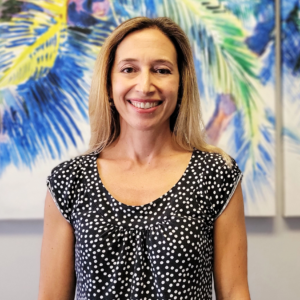
MARYANN DANIELS, PT, MCMT, IDN
Physical Therapist | Dry Needling Certified | Mastery Certified In Manual Therapy | Pelvic Floor And Post Partum Specialist
Maryann was originally born in Connecticut but moved to Florida with her family at the age of 9 and she grew up in Jupiter, Florida. She then went to college at the University of Central Florida...

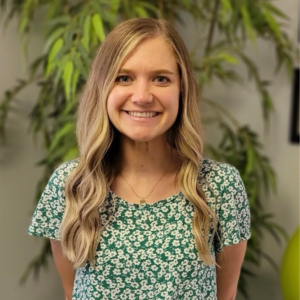
Kayla Cook, DPT, HSP, CSCS
Doctor of Physical Therapy | Hesch Sacroiliac Practitioner | Certified Strength And Conditioning Specialist | Ehlers-Danlos Syndrome Specialist | Volleyball Specialist
Dr. Kayla Cook was born and raised in Northern California and received her undergraduate degree in Kinesiology from California State University in Sacramento. She then received her Doctorate in Physical Therapy from The University of St Augustine for Health Sciences...
BECOMING PAINFREE IS EASIER THAN YOU THINK

Step 1:

Step 2:

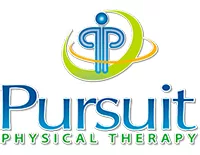
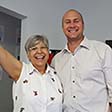 Anne E.
Anne E.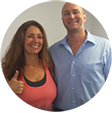 Lisa B.
Lisa B.